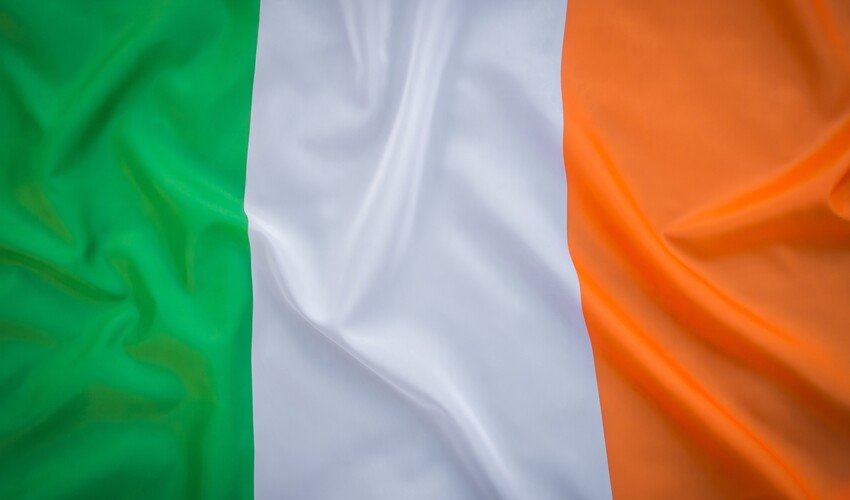Flags represent the identity and pride of nations. Each color and pattern tells a story. Among many flags, the Green White Orange Flag stands out for its symbolic meaning and connection to multiple countries. But which country does it belong to? Let’s explore the meaning, history, and countries associated with this beautiful tricolor flag.
1. The Meaning Behind the Green, White, and Orange Flag
The Green White Orange Flag has deep symbolic value. Each color represents unity, hope, and peace. Green often symbolizes growth, nature, and prosperity. White stands for peace and purity. Orange represents courage and sacrifice. These colors, when combined, create a message of harmony between different groups or cultures. The flag represents unity among people of different beliefs and traditions.
2. The Irish Flag – The Most Famous Green, White, and Orange Flag
The most recognized Green, White Orange Flag in the world is the national flag of Ireland. It is a vertical tricolor of green, white, and orange. The flag was first introduced in 1848 by Thomas Francis Meagher, a leader in the Irish independence movement. The green represents Irish Catholics and nationalists. The orange represents Irish Protestants and supporters of William of Orange. The white in the middle symbolizes peace and unity between the two communities. This flag officially became the national flag of Ireland when the country gained independence in 1922. Today, it stands as a symbol of national pride and peace.
3. The Flag’s Connection to Peace and Unity
The design of Ireland’s flag carries a strong message of reconciliation. The white between the green and orange shows the desire for harmony. It represents Ireland’s hope to unite people from different backgrounds and beliefs. Even though Ireland has faced historical conflicts between communities, the flag remains a reminder of peace. It reflects the Irish people’s determination to move forward as one nation.
4. Similar Flags Around the World
Interestingly, the Green White Orange Flag is not unique to Ireland. Some other countries and regions also use similar colors, but with different meanings.
For example:
- Ivory Coast (Côte d’Ivoire) also has a green, white, and orange flag.
- However, its design has vertical stripes arranged in the opposite order: orange, white, and green from left to right.
- The Ivory Coast flag represents different ideas. Orange symbolizes savannahs in the north, white stands for unity, and green represents the forests of the south.
It’s easy to confuse the Irish and Ivorian flags. The main difference is the order of colors and the shade of orange. The Irish flag has a deeper green, while the Ivorian flag has a lighter shade.
5. The Cultural and Political Meaning
Flags are more than fabric. They represent history, struggle, and pride. The Green White Orange Flag of Ireland became a symbol of freedom and unity after years of colonial rule. During Ireland’s struggle for independence from Britain, the flag was seen as a call for equality and peace. It reminded people of the need to come together, despite differences. Today, during events like St. Patrick’s Day, the flag waves proudly. It reminds the world of Ireland’s journey and its enduring spirit.
6. Green, White, and Orange in Modern Context
The Green White Orange Flag is also seen in sports, parades, and cultural festivals. It appears on clothing, logos, and even social media to celebrate Irish identity. Irish communities across the world use this flag to express their roots. It is not just a political symbol now—it’s also a cultural one. Whether it’s displayed during international football matches or heritage days, the flag brings people together under one identity.
7. Common Confusions with Other Flags
Because of its color pattern, the Green White Orange Flag is sometimes confused with the flag of India, which also contains these colors but in a different order and design. India’s flag features horizontal stripes—saffron (orange) at the top, white in the middle, and green at the bottom. It also includes the Ashoka Chakra, a blue wheel in the center. So, while the colors may look similar, each flag tells a unique national story. The Irish flag stands for unity between Catholics and Protestants. The Indian flag represents strength, peace, and faith.
8. Why Flags Matter
Flags are not just symbols; they tell the story of people and their struggles. The Green White Orange Flag teaches us the value of peace and togetherness. It reminds us that nations are built on unity, respect, and understanding. Even after centuries of conflict, the Irish flag continues to represent hope for lasting peace. In every country that uses similar colors, the flag serves as a reminder of shared values—freedom, faith, and unity.
9. Final Thoughts
The Green White Orange Flag mainly belongs to Ireland, symbolizing peace between communities. However, countries like the Ivory Coast also share these colors but with different meanings. No matter the design, the message is universal—hope, unity, and peace among people. The flag reminds us that harmony can exist despite differences. Every time the flag waves, it represents courage, history, and the dream of unity. It stands as a timeless symbol of peace and pride for generations to come.
FAQs
1. Which country’s flag is green, white, and orange?
The most famous Green White Orange Flag belongs to Ireland. Ivory Coast also has a similar flag with reversed colors.
2. What do the colors on the Irish flag mean?
Green stands for Irish Catholics, orange for Protestants, and white for peace between both communities.
3. How can we tell the difference between Ireland’s and the Ivory Coast’s flags?
The Irish flag has green on the left, while the Ivorian flag has orange on the left.
4. When was the Irish flag first used?
It was first introduced in 1848 and officially adopted after independence in 1922.
5. Why is the Green White Orange Flag important?
It represents peace, unity, and hope, symbolizing harmony between different groups in Ireland.

Software Testing Lead providing quality content related to software testing, security testing, agile testing, quality assurance, and beta testing. You can publish your good content on STL.



